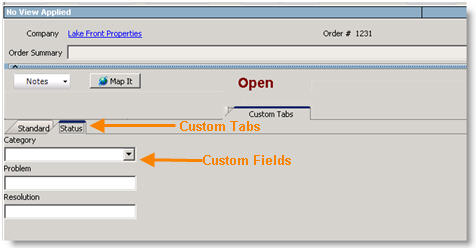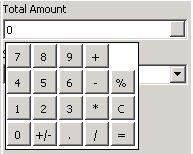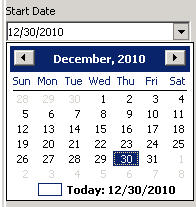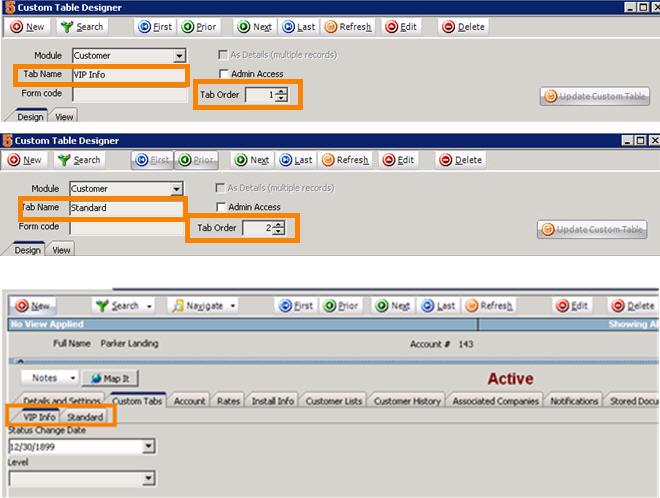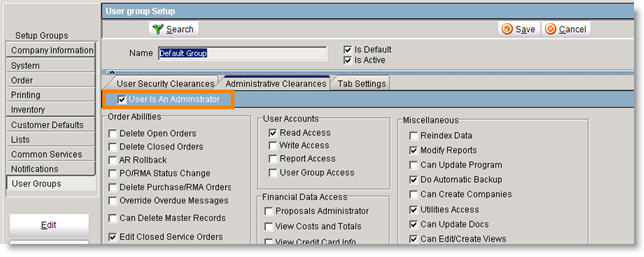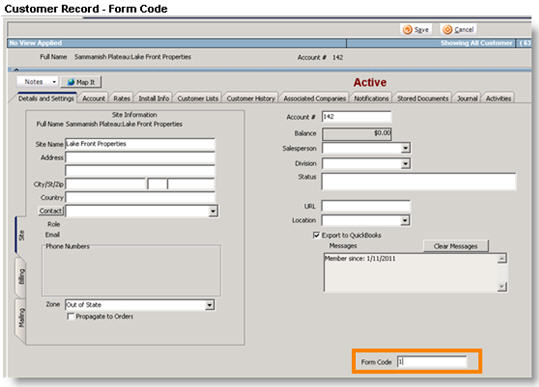Difference between revisions of "Custom Tabs and Fields"
| Line 123: | Line 123: | ||
<br>[[File:NewFieldRow.jpg]] | <br>[[File:NewFieldRow.jpg]] | ||
| − | <br>11. In the '''Field Name''' and '''Field Description''', enter the name of the field. Do not enter any special characters in these fields, only letters. | + | <br>11. In the '''Field Name''' and '''Field Description''', enter the name of the field. Do not enter any special characters in these fields, only letters.Do not have any spaces between words in the Field Name column. The Field Description is the name that shows on the custom tab. |
<br>12. Select the '''Field Type'''. | <br>12. Select the '''Field Type'''. | ||
<br>13. Place the field on the custom tab using the following columns: | <br>13. Place the field on the custom tab using the following columns: | ||
Revision as of 21:06, 17 February 2012
In SME 7.1 you have the ability to add custom tabs with custom fields to your records. You can call these fields any name you want and choose between many field types. In the search window you can sort by the custom fields just like all the other fields in SME. You can also apply an access level to each of the fields to restrict user groups from seeing the field.
In 7.1, you will see a tab called Custom Tabs in your Leads, Customer, Maintenance Contracts, Customer Equipment, Service, Install, Invoices, and Users. On this tab, you can add multiple custom tabs containing custom fields as shown in the image above.
View the video below for an overview or read through the guide for more information about setting up custom fields.
<videoflash>Del59utdPR8</videoflash>
Types of Custom Fields
|
|
Definition
|
Sample
|
|
Boolean
|
True or false field. Check the box for true. Leave the box unchecked for false.
|
|
|
Button
|
This requires custom code to respond to the button. For example you can add code that runs some other program when the button is pressed. |
|
|
Currency
|
Uses the default currency set by Windows language and settings, for example $. Type numbers in the field or click in the field to use the calculator. |
|
|
Date
|
Click in the field and select a date from the calendar.
|
|
|
DateTime
|
Enter both date and time. Select a date from the calendar. Use to increase or decrease time.
|
|
|
Integer
|
Enter numbers only. Cannot enter a decimal. Limit to 9 digits
|
|
|
LargeInt
|
Enter numbers only. Cannot enter a decimal.
|
|
|
Memo
|
Used for a paragraph or large block of text versus one line of text. | |
|
Numeric(decimal)
|
Enter a number with decimals. (the field length needs to be > 5) |
|
|
PickList
|
Drop down list. The drop down list can be configured with an unlimited number of selections. |
|
|
String
|
Used for a single line of text. For a block or paragraph of text, use Memo. |
|
|
Time
|
Time field
|
|
Create Custom Fields
1.Go to Utilities module.
2. Click Custom Tabs.
3. Click Run It.
The Custom Table Designer window will open. This is where you will select what module you are adding the tab and fields to. You will assign a name for the tab and layout the custom fields on the tab.
4. Click New.
5. In the Module field, select the module you want to add a new custom tab to.
6. In the Tab Name field, enter a name for the custom tab.
7. Click Save.
Now the tab is created, you can start adding the fields to the new tab.
8. Click Edit.
9. Click ![]() at the bottom of the Custom Table Designer.
at the bottom of the Custom Table Designer.
10. Notice a line was added to the Design tab.
11. In the Field Name and Field Description, enter the name of the field. Do not enter any special characters in these fields, only letters.Do not have any spaces between words in the Field Name column. The Field Description is the name that shows on the custom tab.
12. Select the Field Type.
13. Place the field on the custom tab using the following columns:
Left – number of pixels from the left side of the tab.
Top – Number of pixels from the top of the tab.
Height – Number of pixels high the cell is.
Width – Number of pixels wide the cell is.
14. Click Save.
**NOTE** It is not advised to change the field type once you started to enter data into the field. If you decide to change the field type after data is entered into the field, then all the data that was entered into the original field type will be lost.
Preview what the fields will look like by clicking the View tab in the Custom Table Designer window.
To see the custom tab in the module, close and reopen SME. Go the module and select the Custom Tab.
Custom Tab Order
If you create more than one custom tab for a module, you can determine the order of the tabs. In the Custom Table Designer window, locate the Tab Order field. Enter 1 in the tab you want on the left. In the example below, the VIP Info tab has 1 in tab order so it will be on the left. The Standard tab has 2 in the tab order so it will be on the right. If there was another tab, we would enter 3 to have it to the right of the standard tab.
Custom Tab - Admin Access
In the Custom Table Designer window, there is a checkbox for Admin Access. (image below)
If this box is checked, then the tab is only visible to SME users assigned to user groups where User Is An Administrator is checked (image below).
Edit Custom Fields
- Go to Utilities module > Custom Tabs.
- Click Run It.
- Click Search and select the custom tab containing the fields you want to edit.
- Click Edit.
- Add more fields by clicking
 at the bottom or make changes to existing fields.
at the bottom or make changes to existing fields. - Click Save.
- Click the View tab to preview your changes.
- Close and reopen SME. Go to the custom tab in the module to see your changes.
Field Access Level
You can assign an access level to each custom field. Only users that are authorized to see that level can access the custom field.
Someone with access 0 can see everything, access 1 would only see fields with access 1 or higher, user group access 2 would not see 0 and 1 fields and would see 2 and higher, etc. Access levels can go to 5.
Assign SME user groups an access levels
- Go to Setup module > Company.
- Click User Groups.
- Click Search to locate the user group you want to apply an access level to.
- Select the Administrative Clearances tab.
- Locate the User Field Access Level field in the right column.
- Click Edit.
- Enter the access level (1-5)
- Click Save.
Assign an access level to the custom fields
- Go to Utilities module> Utilities.
- Click Custom Tabs and click Run It.
- Click Search and select the tab containing the fields you need to edit.
- Click Edit.
- Locate the Access Level column (circled below).
6. Enter the access level for the custom field.
7. Click Save.
*NOTE* Access levels are fixed, so you cannot allow a user group to see fields with access levels 1, 5, and 10 but no others.
Form Code
Form code is entered in the customer and then on the work order. (Image below)
The tabs matching this form code and the tabs with no form code and will show on the work order.
You assign the form code to the custom tab (circled in image below). Form codes can be numbers or text.
For example you have a custom tab created for Home Depot customers and you assigned the Form Code of HD. You set the form code on the home depot billing company and every time you create an order for a customer with HD as billing, it sets that form code on the service order and only shows the custom tabs with the HD form code AND any custom tab with a blank form code.
